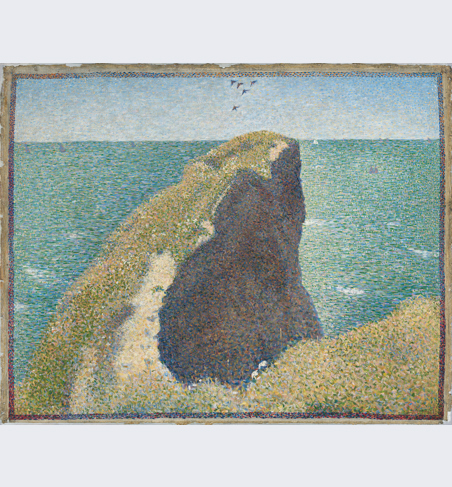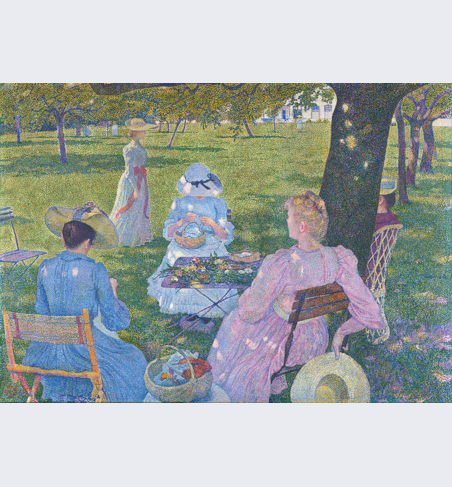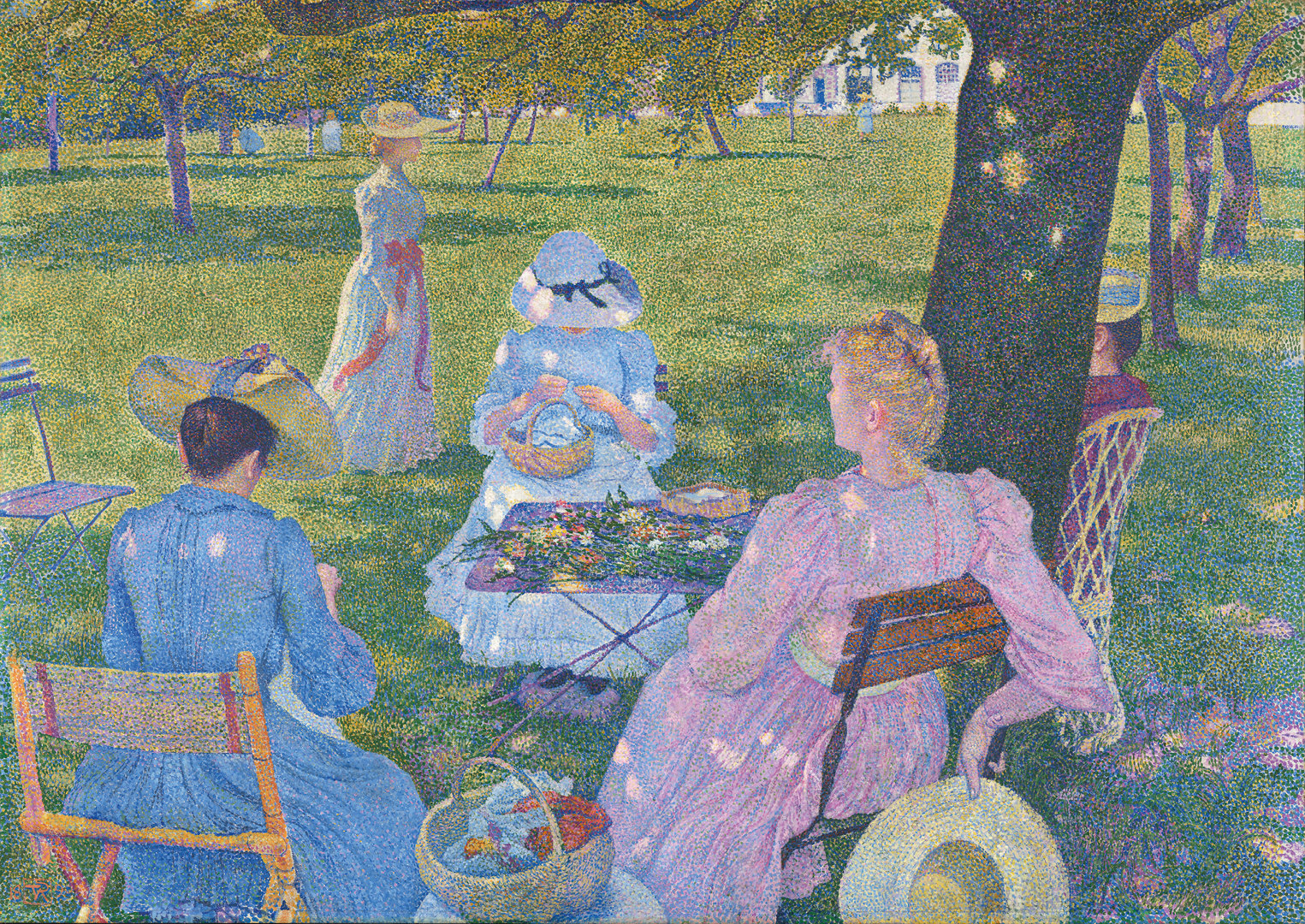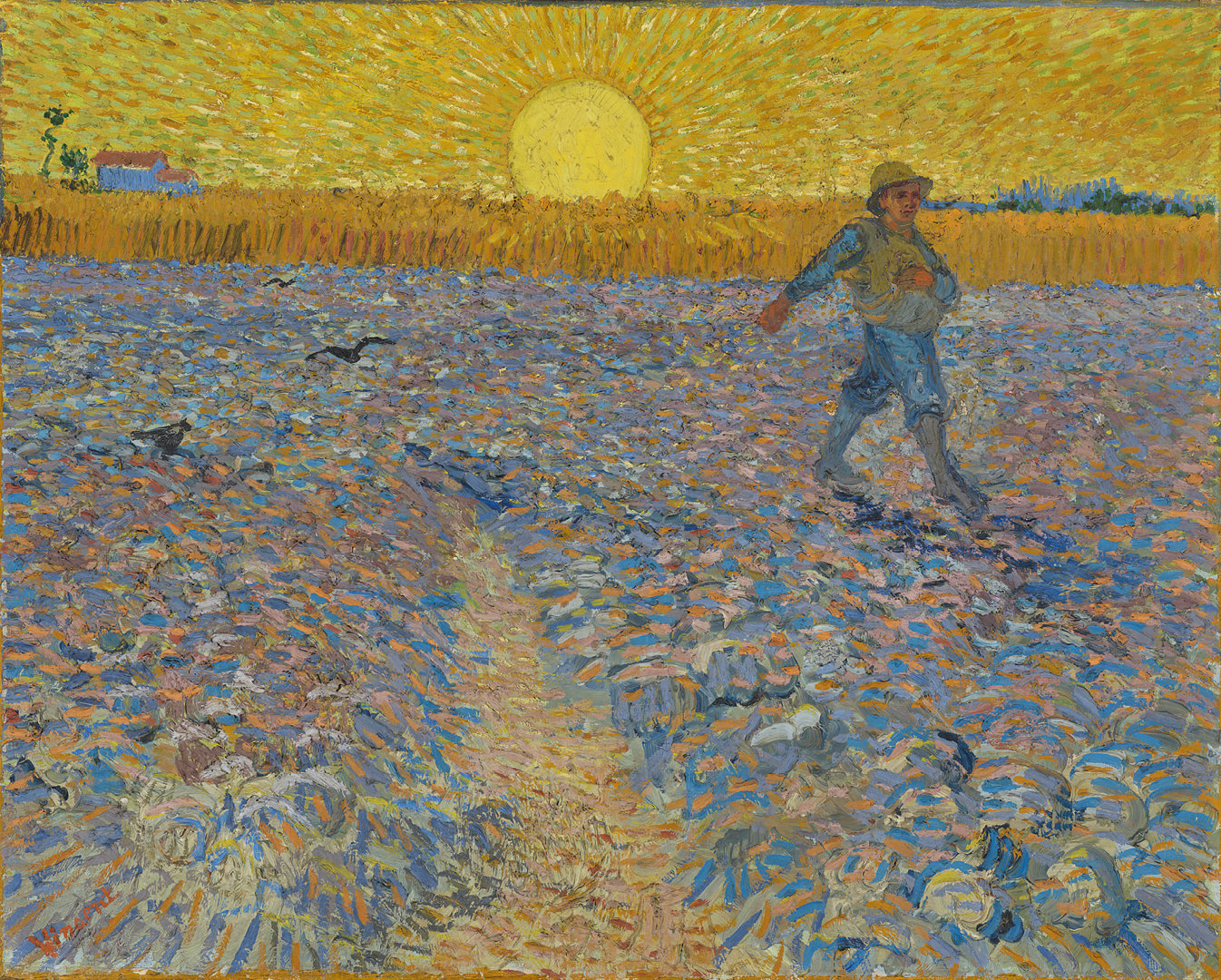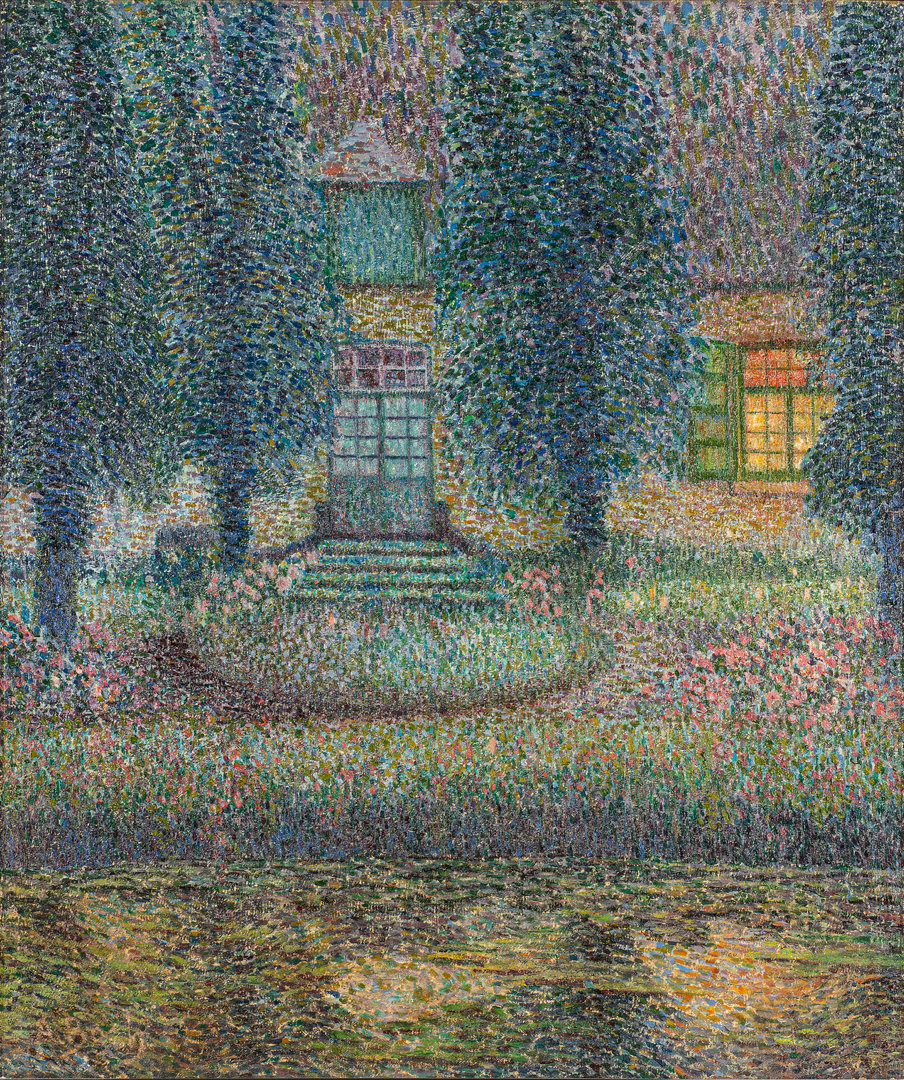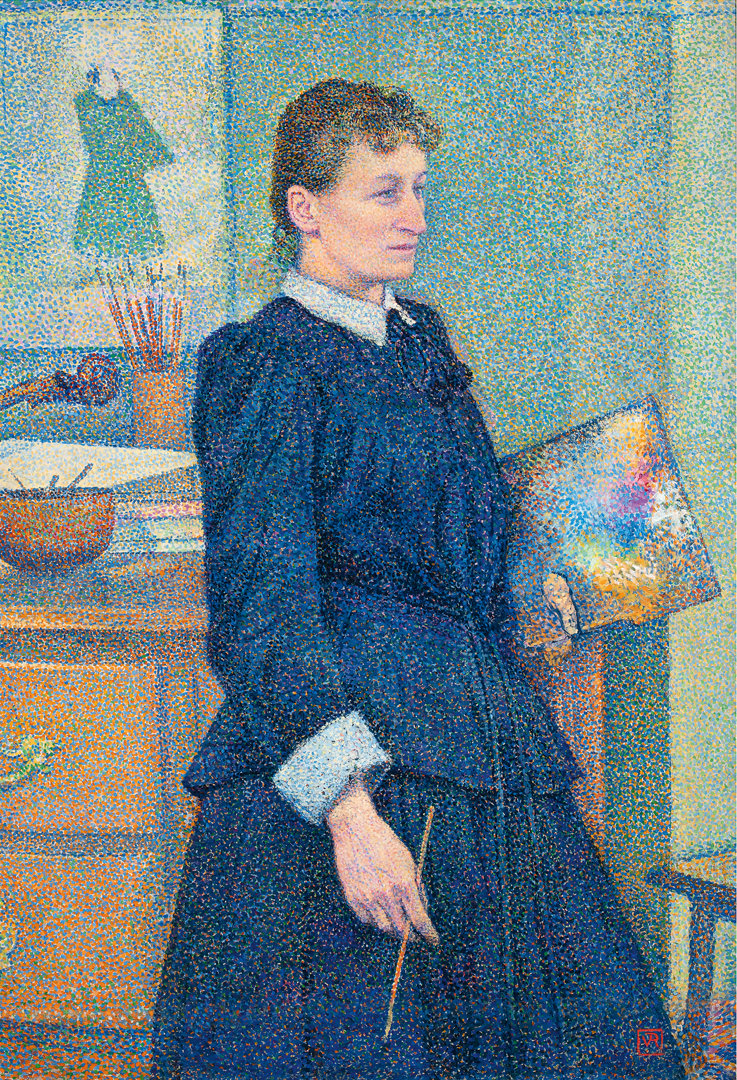Georges Seurat, 'Le Bec du Hoc, Grandcamp', 1885. On loan from Tate: Purchased 1952 © Tate
Théo van Rysselberghe, 'In July, before Noon', 1890 © Collection Kröller-Müller Museum, Otterlo, the Netherlands. Photographer: Rik Klein Gotin
Paul Signac (1863-1935), 'The Dining Room, Opus 152, 1886-7, ©Collection Kröller-Müller Museum, Otterlo, the Netherlands. Photographer: Rik Klein Gotink


